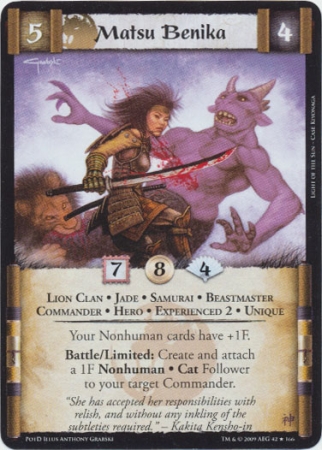The
Beastmaster
by
Ed Greenwood
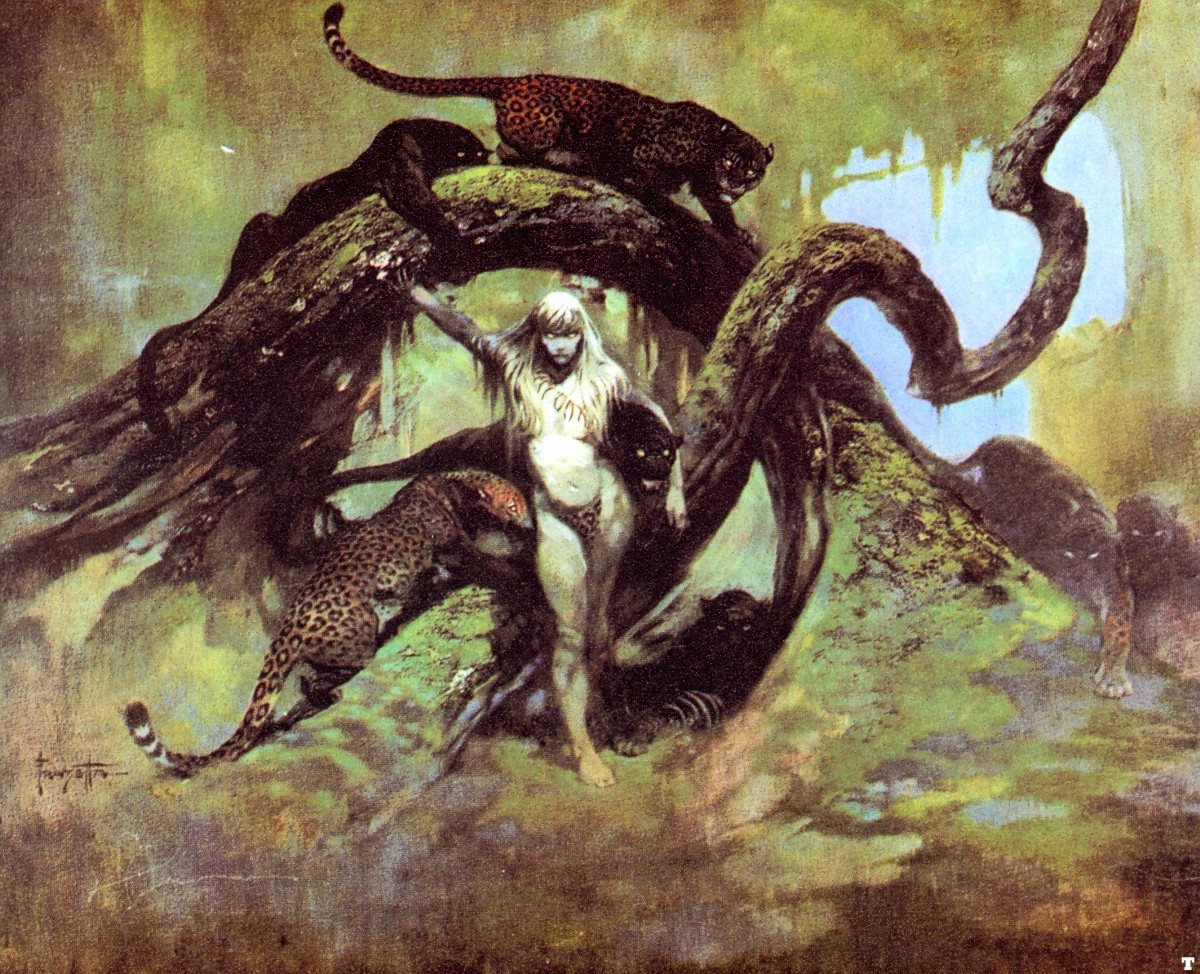
The
Beastmaster
by
Ed Greenwood

| Level advancement | - | Beastmaster abilities | - | Befriending details |
| Dragon | Classes | - | Druids | Dragon 119 |
King of the Jungle
The beast NPC class: a druid's ally
by Ed Greenwood
[This class was designed exclusively as a
nonplayer character class, and it is recommended that it only be used
as such. Like
the witch NPC class from DRAGON® issue
#l14, the abilities of this class are exceptionally powerful, more
so than for many
other classes of equivalent level. The
beastmaster works best as a unique individual who can at least hold
his own
against a reasonably powerful adventuring
party, ensuring a long life and continued
use for this NPC. — The editor]
"No -- look!" hissed Bhaera. "He has come! "
I n t o t h e c i r c l e o
f f i r e l i g h t , f r o m t h e
t r e e s
above, dropped a man, catlike and menacing. Clad in the pelt of
a wild beast, his
face masked behind the cloak's ears and
fur, he looked scarcely human. He moved
fluidly like a creature on the prowl, and
spoke like a predator issuing a challenge.
"Where is the one called Bhaera, who
would hunt in my woods?"
Bhaera swallowed, his throat dry.
"H-here," he said, stepping away from his
comrades, his hand on his sword. "I am
Bhaera."
"Then follow," came the rumbling reply,
and with a bound the beastmaster was
gone into the darkness. . . .
There are rare individuals with a natural
affinity for animals, with telepathic
powers and some aptitude for magic. If
such individuals have a chance to roam
wilderland areas and develop these talents, perhaps learning from others
with
similar skills, they may well become one of
t h a t m y s t e r i o u s b r e e d :
b e a s t m a s t e r s .
Beastmasters must live in the wild almost continuously if they are
to advance
in ability, and most ultimately become
beasts of the wild themselves. They may
serve as animal handlers and trainers for a
fee, and often work with rangers, druids,
and forest denizens (satyrs, dryads,
treants, sylvan elves, etc.) to gain the
strength and abilities associated with life
in the wilderness and to prevent the wanton destruction of wilderness
areas.
Beastmasters must be human, halfling,
or half-elven, of lawful neutral, chaotic
neutral, true neutral, or neutral good
alignment. They have minimum starting
ability statistics as follows: S 14, I 12, W
12, C 15 (gaining hp constitution bonuses
as fighters), and D 14. Beastmasters may
be of either sex, and all are psionics who
possess the very rare ability of animal
telepathy. It is this ability that is the cornerstone of a beastmaster?s
power. All of a
beastmaster?s abilities grow with experience and practice, as shown
in Tables 2 and 3.
A beastmaster continually surveys and is
aware of his surroundings. As a result,
beastmasters have very keen senses. A
beastmaster?s sense of smell extends to a
6? range upwind. Likewise, the beastmaster?s acute hearing allows him
to hear
noises at a rate far better than that of
normal ability (see Table 2, ?Hear Noise?).
An additional bonus to the beastmaster?s
sense of hearing is that deafness suffered
due to explosions or other sharp, unusually loud sounds, lasts l-6
rounds less for
the beastmaster than for other classes.
Lastly, beastmasters have exceptional
vision in night or dark conditions, seeing
clearly within a radius of 15?; this range
increases rapidly with increases in available light (e.g., in moonlit
fields, near a
campfire, etc.) and decreases to a maximum of 3? of discernment (allowing
a
perception of outlines and movement, but
not facial expressions or details) in almost
absolute darkness, such as that caused by
fog or a darkness 15’ radius spell. In daylight, beastmasters
can see clearly for
miles across wilderness terrain and can
easily pick out most moving creatures
despite silence, natural camouflage, or
thick undergrowth. As a result, a beastmaster is surprised only on
a 1 on a dl2,
and nearly always notices partiallyconcealed creatures and creatures
hiding
in shadows (see ?Sight? on Table 2). This
continual observation and awareness is
automatic; beastmasters do not relax their
acute awareness in ?safe? areas. Beastmasters do not depend on
ESP or any sort of
x-ray vision in order to see deliberately
concealed creatures. They are, however,
more likely to spot such creatures when
the latter move across nearby terrain
simply because they habitually scan places
they recognize as affording cover, and
constantly think of such spots in terms of
routes from one to another. In this way,
beastmasters notice movement in the gaps
between one piece of cover and the next.
Beastmasters can nap readily and can
roughly determine the length of time they
slumber. They do this regardless of environment, physical discomfort,
and so
forth, but always sleep lightly, awakening
instantly upon hearing an unusual noise,
upon being touched, or upon feeling an
unexpected vibration.
Due to acute senses, strong willpower,
and their necessarily fine physical condition, beastmasters are naturally
resistant
to diseases ? including lycanthropy,
against which they have a -5% chance
per level of advancement of contracting
(see the Dungeon Masters Guide, pp. 22-
23). Beastmasters are not, however, immune to the effects of poison,
nor to
psionic or magical charm, domination, or
suggestion; they do, however, gain a +2
bonus to all saving throws versus these
dangers. Beastmasters use the attack tables of fighters but never gain
more than
one attack per round, regardless of level.
They save as clerics and can employ all
weapons. They can use only normal
leather armor and may not employ
shields, as a beastmaster does not like to
be constricted or encumbered by clothing
and equipment.
Beastmasters never wear perfume or
strongly-scented garb or accoutrements,
and do not like to be in close proximity of
such items, as their sense of smell may be
severely impaired. Beastmasters of all
levels can easily live off the land, gaining
sufficient food for themselves and up to 10
man-sized companions for an indefinite
length of time. They can readily identify
any beast they have been instructed to
recognize or which they have encountered
before by scent and signs (pawprints,
Table 1
Beastmaster Experience Levels
| Experience points | Experience level | 8-sided dice for accum. hit points | Level title |
| 0 -- 5,000 | 1 | 1 | Handler |
| 5,001 -- 10,000 | 2 | 2 | Breaker |
| 10,001 -- 16,000 | 3 | 3 | Herdhand |
| 16,001 -- 28,000 | 4 | 4 | Husbandman |
| 28,001 -- 50,000 | 5 | 5 | Keeper |
| 50,001 -- 94,000 | 6 | 6 | Ostler |
| 94,001 -- 160,000 | 7 | 7 | Tamer |
| 160,001 -- 248,000 | 8 | 8 | Trainer |
| 248,001 -- 392,000 | 9 | 9 | Master |
| 392,001 -- 592,000 | 10 | 9+6 | Wildrunner |
250,000 experience points per level are needed for each additional level
above the
10th. Beastmasters gain 6 hp per level after the 9th level.
dung, teethmarks, etc.). A beastmaster
speaks the common, druidic, and his alignment tongues, and can learn
(a process
involving 1-6 months under a tutor) one
additional language per level, including
animal tongues and those of dragons,
woodland beings, and aerial creatures.
Due to their acute senses, beastmasters
save vs. all illusions of living beings at +3.
At 3rd level, they gain the natural, nonmagical ability to pass at
a normal rate of
movement through overgrown areas (such
as briar patches, tangled thorns, and thick
undergrowth) without leaving a discernible trail. Note that this ability
will leave
traces of passage in deliberately arranged
traps or set snags, walls, and fresh mud or
sand that cannot be crossed by leaping,
and cannot be used to avoid mechanical
traps or such magics as entangle.
Beastmasters can use all magical items
not limited to a specific class. Their directly animal-related powers
(e.g., locate
animals, monster summoning, and animal
friendship) operate at a -10% chance
when dealing with creatures not from the
Prime Material Plane. These abilities are
described in Table 3 and are all usable at
will (one at a time).
If a druid or beastmaster tutor is available, a beastmaster gains the
ability to work
certain minor magics at higher levels, as
follows:
Pass without trace (as the first-level
druid spell) is gained at 6th level, and is
usable once per day at 6th level and an
additional time per day (any 24-hour or
144-turn period) for each level advanced
beyond 6th.
Anti-animal shell is gained at 9th level,
and is usable once per day.
Repulsion is gained at 7th level, and is
usable once per day, with an additional
daily use gained for every two levels
advanced thereafter.
All of these spells require a verbal and
somatic component when employed by a
beastmaster, but none require a material
component.
As psionics, beastmasters able to gain
more than one minor psionic discipline
always gain empathy; such powers (i.e.,
further minor and major disciplines
gained) broaden at random thereafter.
Upon reaching 5th level, or at any point
thereafter, the beastmaster acquires the
ability to cause fear by means of an eerie
howl -- a full-throated cry which can be
generated once every 144 turns (24
hours). A howl wracks the lungs and
throat of the beastmaster, temporarily
muting him for one round. During this
time, the beastmaster is unable to speak or
otherwise emit vocal sounds, and is further penalized a -2 on AC and
on attacks
due to ?winded? shudders (an involuntary
series of convulsions caused by the physical strain of the action).
A howl causes
fear (no saving throw) in creatures of
animal to average intelligence within 6? of
the beastmaster. The howl affects all creatures of 2 HD
or less and zero-level humans, humanoids, and demi-humans.
Creatures with more than 2 HD (or with 2
HD plus a bonus), and classed beings of 1st
or greater level, are immune to a howl?s
effects. For the effects of a howl, refer to
the fourth-level magic-user spell, fear.
Level advancement
Beastmasters must live in a wild habitat
to advance in levels, and thus grow in
power through the constant use of their
abilities. Beastmasters may self-tutor themselves up to and including
the achievement
of 4th level. Thereafter, each level advancement requires 2-6 months
under a
tutor (a beastmaster of higher level, a
ranger at least four levels higher than the
beastmaster trainee, or a druid at least
two levels higher than the trainee). To
learn the spells listed above will require a
tutor, although the tutor need not be able
to cast the spells himself. Halfling
beastmasters cannot advance beyond the 7th
level; half-elves and humans are capable of
unlimited advancement, so long as a tutor
can be found. Tutors typically demand a
period of service or one very difficult task
prior to training the beastmaster.
Acquisition of experience points comes
from hunting, observing, handling, and
training wild animals, and is typically a
slow process. It may take 25 years or more
for a beastmaster to attain Master level
(9th level), although some gifted individuals have attained it in a
decade.
Beastmasters of ?Wildrunner? and higher status are
few indeed (although such beastmasters
may merely be far removed from society
and may be more numerous than is generally believed).
Beastmaster Abilities
Sight: The ability to notice partiallyconcealed creatures,
signs, or tracks, and
creatures hiding in shadows. This ability is
not affected by available light (due to the
exceptional eyesight of a beastmaster), and
can be used to locate secret doors, portals,
and the like (-25% chance of success).
Move silently: Similar to the thief ability.
Hide in shadows: Similar to the thief
ability. A beastmaster must remain motionless to hide thus (-15% chance
of success
if slight movements are made as a result of
spellcasting, signalling, or readying a
weapon); the beastmaster can, however,
exercise psionic abilities, cast spells (with
the modifier mentioned), or exercise other
class abilities (such as monster
summoning) while in hiding.
Hear noise: Similar to the thief ability.
Climb: This represents the chance a
beastmaster has to successfully climb
Table 2
Abilities by Level
Base chance to:
| Level of beastmaster | Sight | Move silently | Hide in shadows | Hear noise | Climb | Bound | Track | Stalk | Detect snares & pits |
| 1 | 92 | 95 | 90 | 70 | 65 | 40 | 90 | 90 | 55 |
| 2 | 93 | 96 | 91 | 75 | 70 | 45 | 91 | 91 | 60 |
| 3 | 94 | 97 | 92 | 80 | 75 | 50 | 92 | 92 | 65 |
| 4 | 95 | 98 | 93 | 85 | 80 | 55 | 93 | 93 | 70 |
| 5 | 96 | 99 | 94 | 90 | 85 | 60 | 94 | 94 | 75 |
| 6 | 97 | 100 | 95 | 92 | 90 | 65 | 95 | 95 | 80 |
| 7 | 98 | 100 | 96 | 94 | 91 | 70 | 96 | 96 | 85 |
| 8 | 99 | 100 | 97 | 96 | 92 | 75 | 97 | 97 | 86 |
| 9 | 100 | 100 | 98 | 98 | 93 | 80 | 98 | 98 | 87 |
| 10 | 102 | 100 | 99 | 99 | 94 | 85 | 99 | 99 | 88 |
| 11 | 105 | 102 | 100 | 100 | 95 | 90 | 99 | 99 | 90 |
t r e e s , r o c k f a c e s ,
o r p i n n a c l e s ? e v e n
w h e n t h e s e s u r f a c e s
a r e w e t ( - 1 2 % m o d i fier).
In doing so, the beastmaster may be
encumbered with a pack, weapons, etc.,
but cannot directly assist another climber.
A beastmaster can climb a man-made wall
if it is not tiled or smoothly dressed, but
cannot climb slick, smooth-surfaced walls
or oiled surfaces, or travel across ceilings
without magical aid. A beastmaster accustomed to a swamp or jungle
environment
will be able to swing from vine to vine (a la
Tarzan) and run along branches with this
ability. If a beastmaster slips or falls in
such situations (failing his roll for this
activity), see the ?Bound? skill below.
B o u n d : Through the observation of
beasts, and through practice and conditioning, a beastmaster learns
and develops
the ability to make exceptional forward
and upward jumps, with a successful
recovery (a balanced landing, an ?on target? pounce, or a sure snatch
and grasp of
vines, tree branches, and rock handholds
when leaping or recovering from a fall).
The maximum bounding ability of a beastmaster is equal to that bestowed
by the
first-level magic-user spell jump ? 30?
forward, and 10' backwards, directly
sideways, or upward. The chance of successfully bounding increases
with practice
(as exemplified by level advancement), but
bounding range does not increase.
Track:
Similar to the ranger ability, with
the same modifiers (see Players Handbook,
p. 24); the base chance of success is shown
in Table 2.
Stalk: This ability represents the
activity
of tracking and approaching a distant
monster (including intelligent foes, such as
humans) without alerting them by scent or
sound. Success requires a successful
"Move Silently" roll when the beastmaster
is within 8? of the prey, and ensures surprise when attacking
(only targets with
exceptional senses -- including all PCs --
are allowed a defensive roll against surprise; with all others, surprise
is
automatic).
Detect snares and pits: Similar to the
first-level druid spell, save that the range
is only 1?, and only in the direction scrutinized. Through concentration,
this ability
can be sustained for as long as desired,
but forbids the use of other class abilities
(such as move silently, psionics, and spells
while doing so.
Locate animals: Similar to the first-level
druid spell, though this ability is gained
through concentration and an acute use of
the senses. This ability is usable at will,
but only for one round duration at a time,
as it is extremely tiring, requiring at least a
one-round rest between attempts. This
ability has only a 2? range, and a 2? viewing ?front? (the beastmaster
must face in
one direction and remain motionless, as
movement makes detection impossible).
Intelligent creatures (such as humans) can
be detected by use of this ability, but enchanted creatures or creatures
from other
planes (e.g., undead, demons, etc.) can
only be detected with a -25% chance of
success.
Call woodland beings: Similar to the
fourth-level druid spell. Intense concentration (a ?sending? of
animal telepathy) is
involved, rather than spell-casting. Unicorns never answer such a summons
launched by a beastmaster. (No creatures
answer such a call if it is made underground or in a large human, demi-human,
or humanoid settlement.)
Monster summoning: A beastmaster
must have an intelligence and a charisma
of 16 or more to successfully develop or
use this ability. This resembles the fourthlevel magic-user spell
monster summoning I,
save that the monsters arrive in 1-4
turns, that the creatures come from a
surrounding radius of 3 miles, and that
they obey the beastmaster for two rounds
for every level of experience. The creatures flee if magically attacked
by a fear or
similar spell, or if facing overwhelming
odds, large amounts of fire, etc. The beastmaster does not command
or control the
summoned creatures precisely, and cannot
enable them to perform tasks beyond their
physical or mental powers. By successful
use of this ability, a beastmaster can cause
creatures summoned against him to flee
(70% chance) or to turn against the summoner (30% chancel.
Animal friendship: Similar to the firstlevel druid
spell, except that this ability
uses a flesh-to-flesh touch and not verbal,
somatic, and material components. Creatures affected by this ability
become companions of a beastmaster, and if not
ill-treated, they will remain friends with
the beastmaster until death, regardless of
any separation between the beastmaster
and the creature, as long as no break of
more than three days occurs during the
three-month period of initial contact. A
beastmaster need not train a creature to
do tricks to cement this friendship.
Hold monster: A beastmaster must have
an intelligence of 13 or more and a charisma of 15 or more to
develop or use this
ability. This ability is similar to the fifthlevel magic-user spell
(including hold person). A beastmaster can hold
one creature
per round by magic and by an exercise of
will, by merely touching the creature
(though not by a weapon attack). The hold
lasts for 1-2 rounds, but may be reapplied.
This occurs automatically, if the beastmaster does nothing else save
touch the target
again in the round in which the held creature would have
recovered. No ?to hit? roll
is required, as the target is immobile.
Quiet: By body and at least fleeting eye
contact, movement, and vocalization, a
Table 3
Beastmaster's Abilities by Level
| Level of beastmaster | Locate animals | Call woodland beings | Monster summoning | Animal friendship | Hold monster | Quiet | Charm monster | Wereform control | Dragon-riding |
| 1 | 45 | 40 | 25 | 55 | 7 | 10 | 5 | 5 | - |
| 2 | 50 | 45 | 30 | 60 | 14 | 20 | 10 | 10 | - |
| 3 | 55 | 50 | 35 | 65 | 21 | 30 | 15 | 15 | - |
| 4 | 60 | 55 | 40 | 70 | 30 | 40 | 25 | 25 | 10 |
| 5 | 65 | 65 | 45 | 75 | 40 | 50 | 30 | 35 | 20 |
| 6 | 70 | 70 | 50 | 80 | 45 | 60 | 40 | 55 | 30 |
| 7 | 75 | 71 | 55 | 85 | 50 | 70 | 50 | 75 | 40 |
| 8 | 76 | 72 | 60 | 90 | 60 | 80 | 55 | 85 | 50 |
| 9 | 77 | 73 | 65 | 95 | 70 | 90 | 60 | 90 | 60 |
| 10 | 78 | 74 | 70 | 99 | 80 | 93 | 65 | 93 | 70 |
| 11 | 80 | 75 | 75 | 99 | 85 | 96 | 70 | 96 | 80 |
b e a s t m a s t e r c a n a t t e m p t
t o c a l m (not
tame) a single excited or fearful creature
(e.g., a wild horse being ridden for the
first time, a stampeding animal, or one
spooked by fire, sudden noise, or movement). Although beastmasters
prefer to
guide and influence animals rather than
?break? and domesticate them, this ability
c a n b e u s e d t o
d e t e r m i n e t h e c h a n c e
o f
success in any cases where this must be
done (a process requiring 50 days minus
1-6 days for positive conditions ?such as
appropriate apparatus, isolation, and food
for rewarding successful performance ?
and minus two days more per level of the
b e a s t m a s t e r ) .
Charm monster: A beastmaster must
have an intelligence of 17 or more and a
charisma of 16 or more to exercise this
ability. This ability resembles the effects of
the fourth-level magic-user spell, save that
against monsters of average or greater
intelligence (such as most humans), there
is a -25% chance of success. Only one
creature at a time (once per round) can be
affected, and the charm lasts only one
turn per level of the beastmaster. If the
beastmaster handles a charmed creature
carefully ? i.e., does not cause what is
perceived as extreme danger, does not
cause it to act contrary to its nature (for
example, leaving natural prey unmolested
when it is hungry), and does not act in a
hostile manner ? the creature will be
friendly toward the beastmaster at the
expiration of the charm. Use of this ability
is exhausting; a beastmaster can charm
only one creature at a time, and after the
expiration of the charm, must refrain
from exercising this ability for at least a
day (a 24-hour period). More frequent
charming attempts are unsuccessful.
Wereform control: A beastmaster who
becomes a lycanthrope cannot advance in
levels until cured of the condition, and has
no more power over his form than any
other lycanthrope. Moreover, the special
abilities of the beastmaster cannot be
exercised when in wereform. Instead,
wereform control refers to an ability
usable when a beastmaster encounters a
lycanthrope. By flesh-to-flesh touch (slap
or punch admissible, but not a weapon
attack), the beastmaster can cause the
lycanthrope to change form by exerting an
overpowering effort of will. The change
may be in either direction (suspected
lycanthropes can be revealed by this
means). If the target has been a lycanthrope for less than two years,
it will
experience 1-2 rounds of disorientation
(treat as confused) upon the sudden shift
in shape. The lycanthrope may suffer
damage (i.e., by armor constriction) in the
change, and cannot change back to the
form it had before use of this ability for
one round per level of the beastmaster.
This ability is usable only once per level of
experience in every 24-hour period, and
can be used only once per day on a particular were-creature.
Dragonriding: Beastmasters of high level
can befriend dragons to the point of riding
them as steeds. Successful befriending of a
dragon requires clear sight and conditions
of audibility between beastmaster and
dragon; the beastmaster must be able to
speak the specific tongue of the type of
dragon encountered as well. Befriending
lasts for 1-3 turns, plus one turn per level
of the beastmaster (and may continue
longer at the DM?s option, if the alignments of dragon and beastmaster
are
similar, and if the beastmaster?s words and
actions do not offend or endanger the
dragon, or make it uneasy).
A befriended dragon will not attack the
beastmaster as long as he does not attack
it or plunder from its hoard (this protection does not extend to companions
of the
beastmaster, whether animals or intelligent beings). Furthermore, the
dragon
may agree to allow the beastmaster to
physically aid or assist it, or to trade material treasure or food
for an opportunity to
ride it.
Dragonriding is always perilous due to
the limited duration of the beastmaster?s
influence over the dragon. Dragons often
swoop and soar to show off (both endangering the rider and wasting
time), and
although they almost never dive to attack
a creature or engage in aerial combat, it
has happened at a beastmaster?s
suggestion? and is particularly likely
when the creature in question is a known
enemy to the dragon. Beastmasters cannot
successfully hold, charm, or cast repulsion
on a creature they are riding. Dragons
may buck, attempt to scrape off a rider on
rock walls or pinnacles, buffet, roll, or
even land on and crush riders whose
befriending has worn off. Ridden dragons
will agree to pick up (and ferry) items or
creatures, or allow their rider to do so,
however.
Beastmasters of all levels are immune to
the fear auras of all dragons, regardless of
hit dice or circumstances.
Beastmasters may befriend any animal
whenever that creature is of average or
greater intelligence, and is a solitary wilderness dweller. This ability
may be attempted by the beastmaster with a greater
or lesser chance of success according to
the situation and the creature in question.
The sole exception to this is the unicorn
--
although a beastmaster may indeed befriend a unicorn, such friendship
is born
of deeds and mutual respect, and not a
beastmaster?s force of will and ability to
influence this creature. Although a beast
master is never awed into inactivity by the
mere sight or presence of a unicorn, no
beastmaster would ever ride a unicorn
unless the creature allowed it. Likewise,
no beastmaster would ever agree to hunt,
tame, or attack a unicorn, as they are the
creatures most sacred to a beastmaster.
A tale is told of Iraven the Tracker, a
famous beastmaster. When orcs came into
his woods hunting with arrows, he harried them from the trees, dropping
from
ambush to slay one here and another
there, confusing them with animal calls
and false orc-talk. In this way, he whittled
a band of 40 down to 20 or less. These
remaining orcs were terrified and wanted
only to escape the forest. Having lost their
way, they blundered on until they suddenly came upon a unicorn in a
little dell.
Leaping from concealment, Iraven attacked them openly and so drew their
poisoned arrows from slaying the unicorn.
He was nearly slain himself. Pierced by a
dozen black shafts, he fled only a few
paces before falling from the effects of the
poison.
When he awoke, the orcs were gone, his
wounds were clean and nearly healed, and
the arrows were drawn forth. When he
regained his strength, Iraven searched for
elves until he found one who could teach
him the tongue of unicorns. From that day
to this, it is a mark of pride among beastmasters to learn the speech
of unicorns,
even if they never expect to see one. (It is
86% likely that any NPC beastmaster of
9th or greater level knows the tongue of
unicorns.)
It is said that Iraven sought the unicorn
who had saved him for many years, and
when he found it one moonlit night as
both came to drink at the same forest
pool, he was able to properly thank the
beast. Its name was Aerbraen, the tale
tells, and they met at the pool on many
other nights before Iraven died.
The dragon and the unicorn represent
the breadth of the abilities of a beastmaster: savage and graceful
power. Few can
match them; few would want to.
1. SUBCLASS = n/a
2. SOCIAL CLASS MINIMUM =
3. ABILITY SCORE MINIMUMS
STRENGTH =
INTELLIGENCE =
WISDOM =
DEXTERITY =
CONSTITUTION =
CHARISMA =
COMELINESS =
4. POSSIBLE RACES & MAX. LEVEL ATTAINABLE =
5. MULTI-CLASS POSSIBILITIES =
6. HIT DIE TYPE =
7. MAXIMUM NUMBER OF HIT DICE =
8. SPELL ABILITY =
9. ARMOR PERMITTED =
10. SHIELD PERMITTED =
11. WEAPONS PERMITTED =
12. OIL PERMITTED =
13. POISON PERMITTED =
14. ALIGNMENT =
15. STARTING MONEY =
16. WEAPON PROFICIENCIES =
17. NON-PROFICIENCY PENALTY =
18. NON-WEAPON PROFICIENCIES =
19. STARTING AGE =
20. COMBAT =
21. SAVING THROWS =
22. MAGIC ITEMS =
| XP | Level | Dice for HP | Title | ||||||
zb
NAMES
Dar (From the 80s B-movie Beast master) (Thanks: Charles Davis)
21.

20.
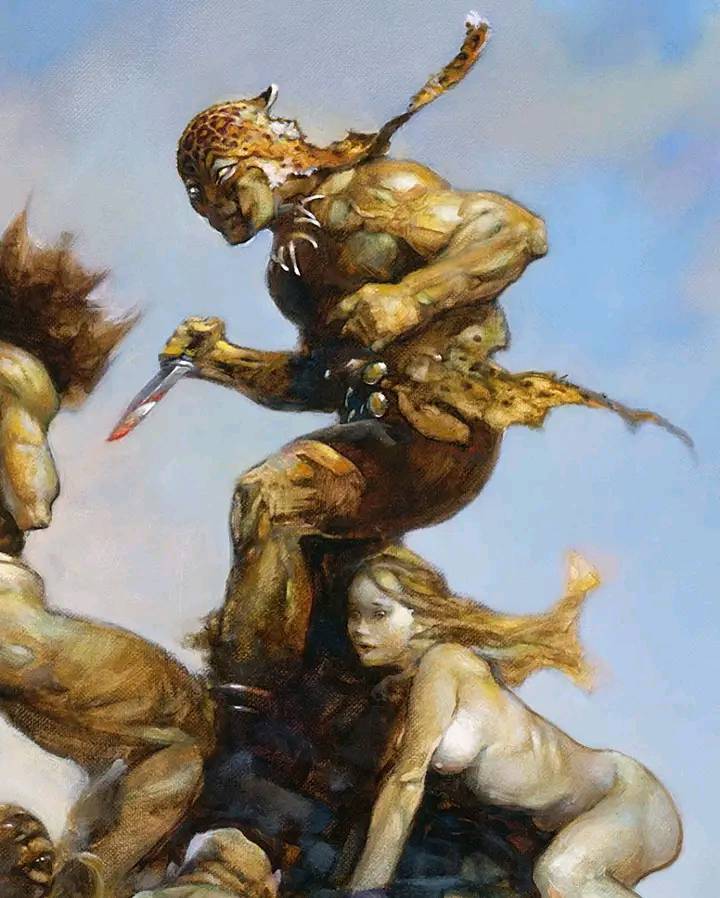
19.
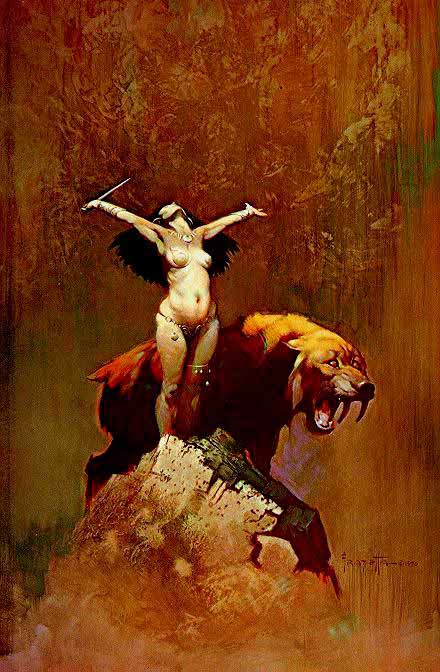
18.
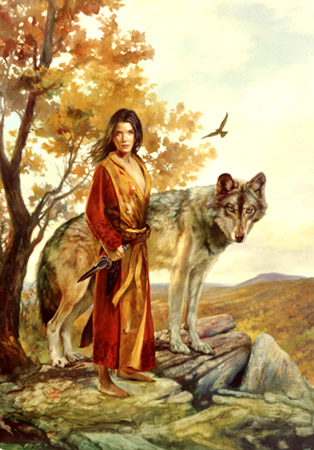
17.

16.
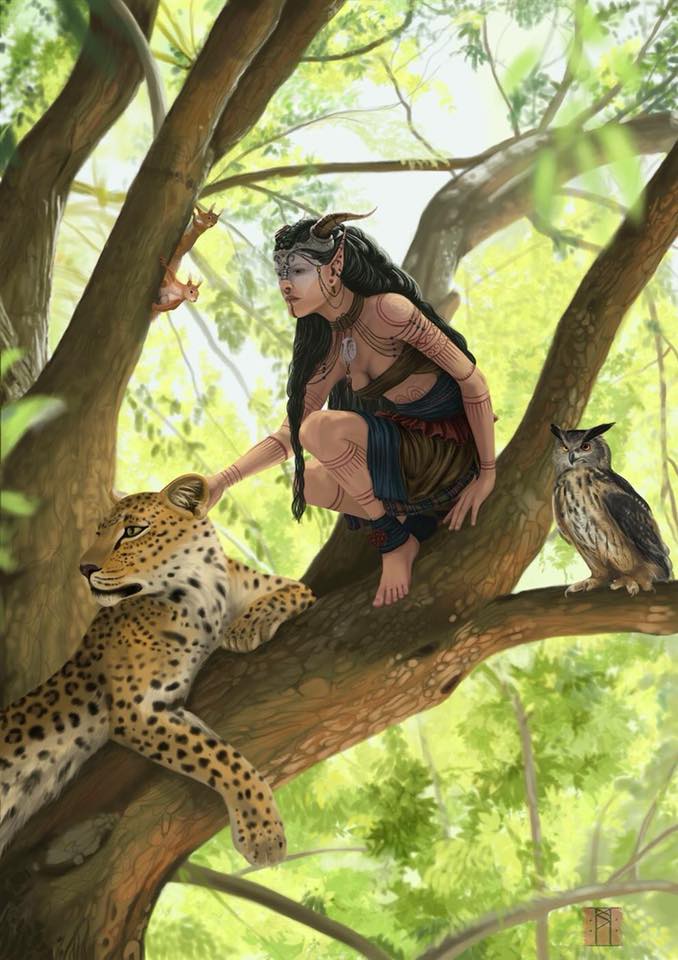
15.
14.
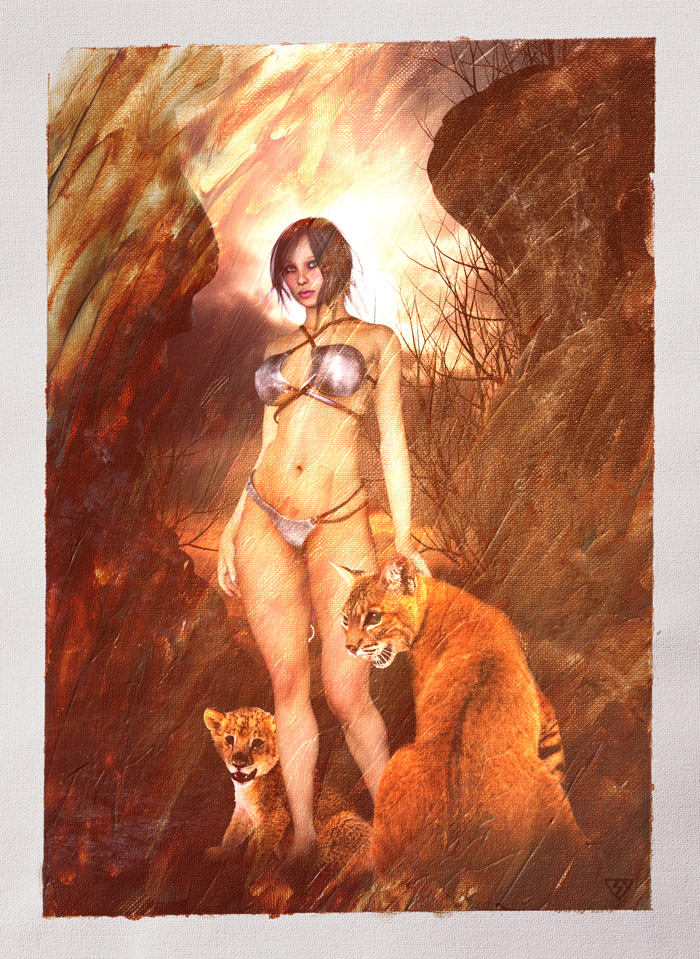
13.
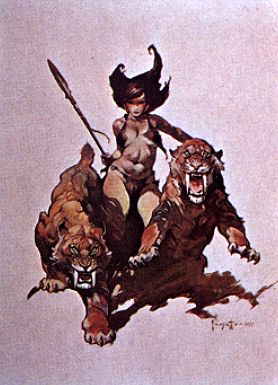
12.
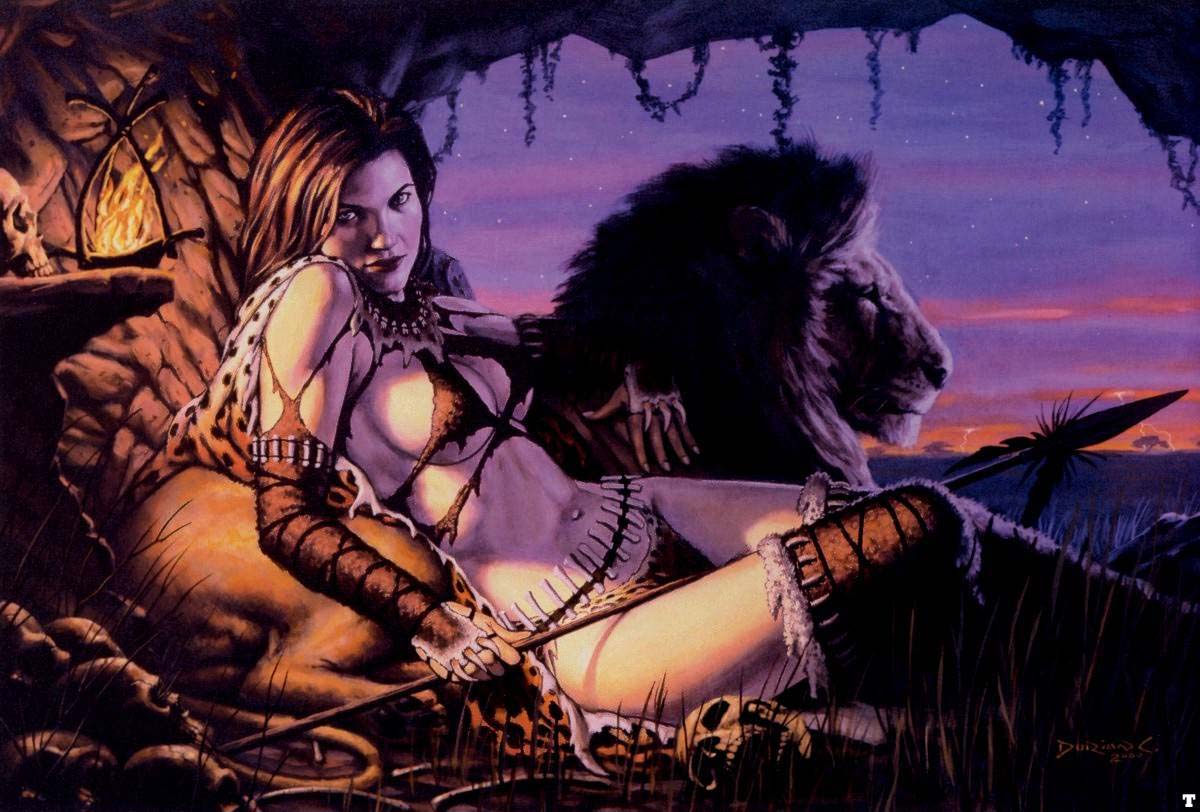
11.
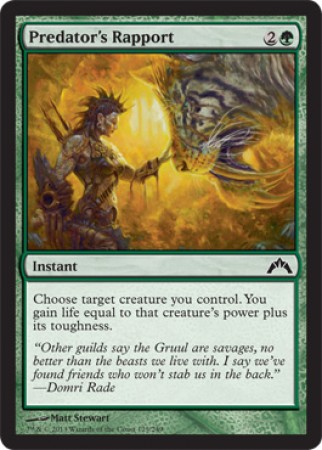
10.
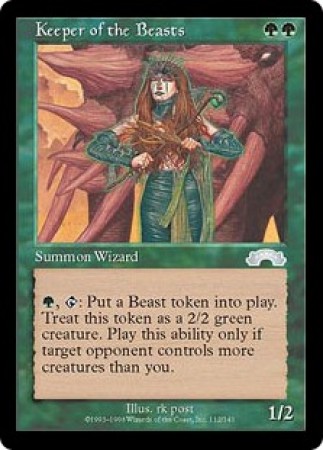
9.
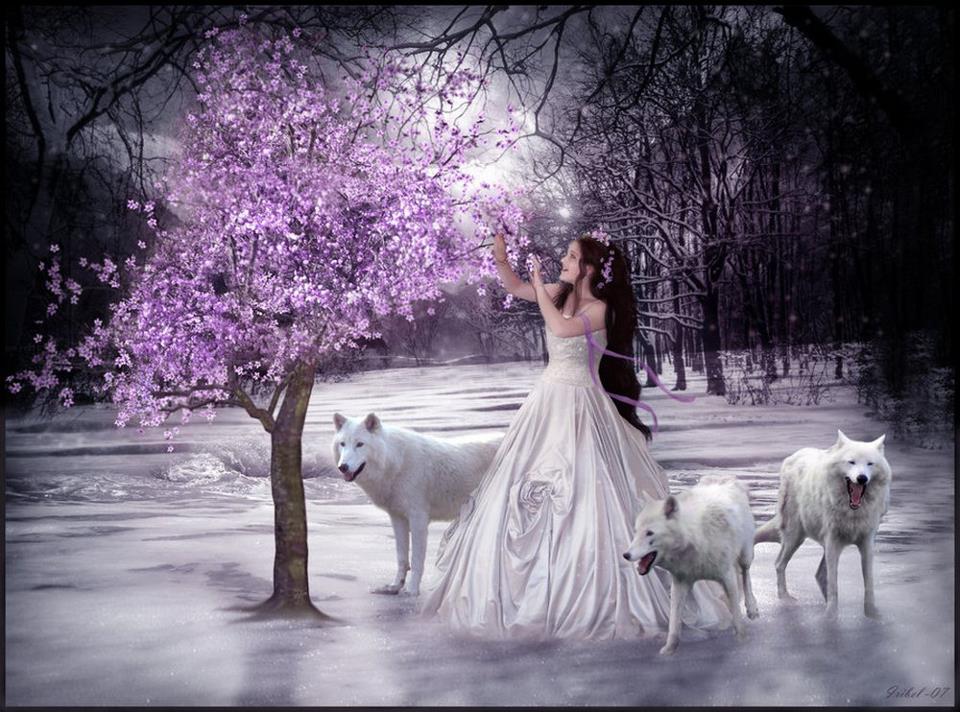
8.
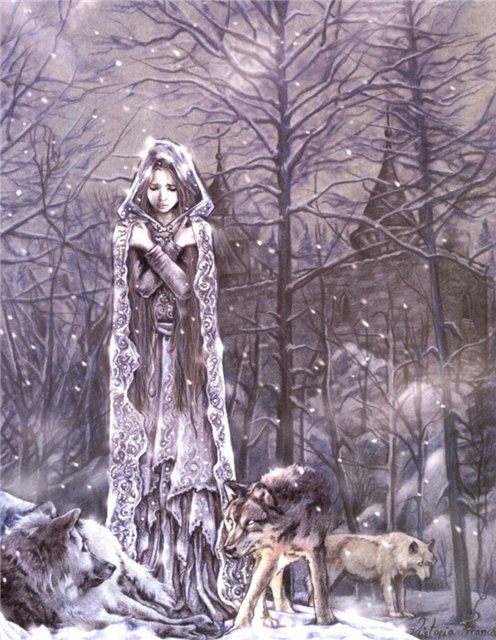
7.
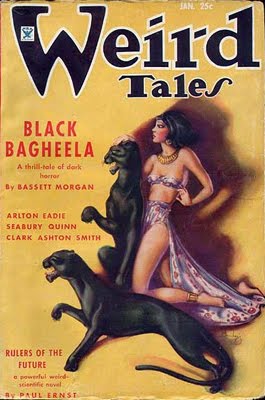
6.
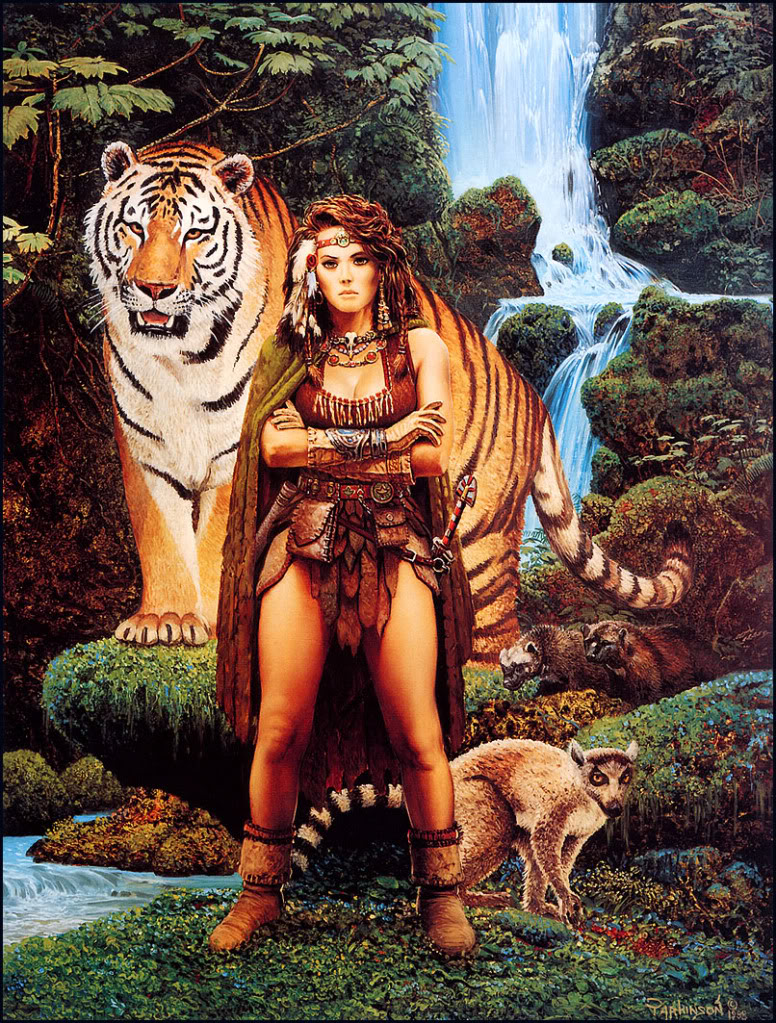
5.
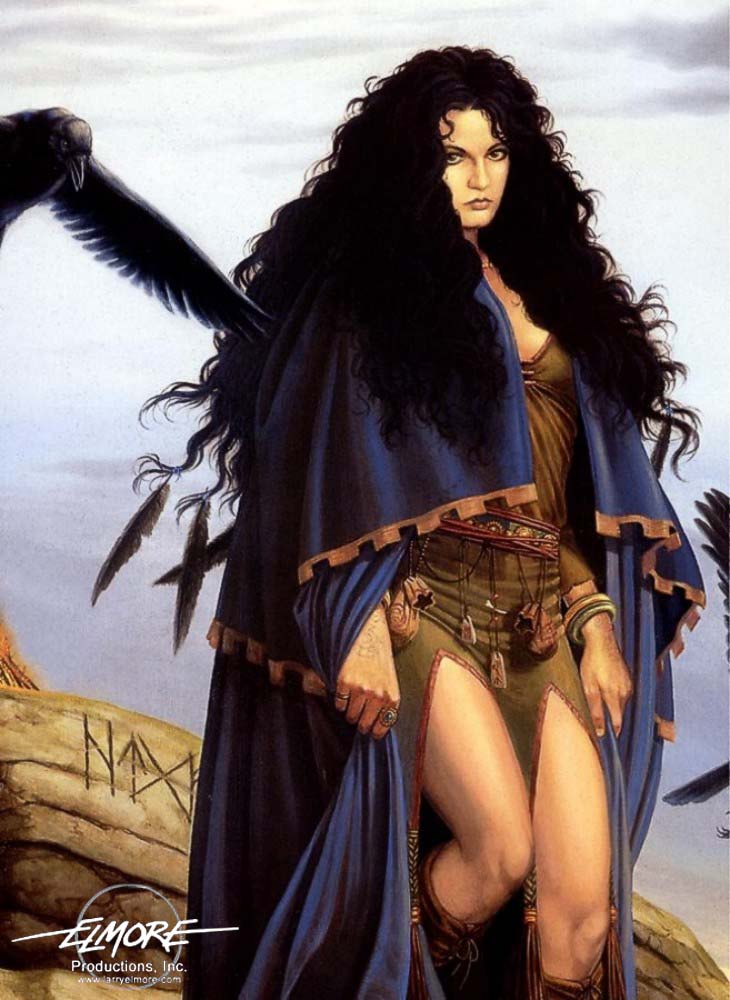
4.
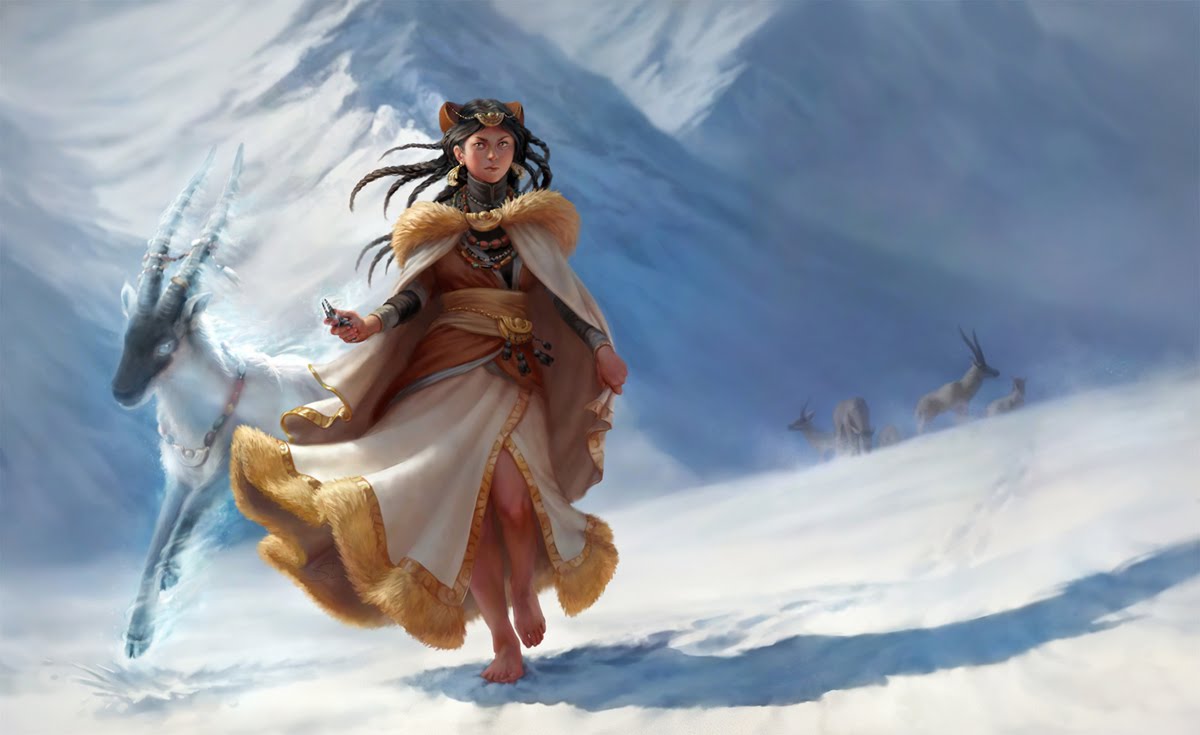
3.
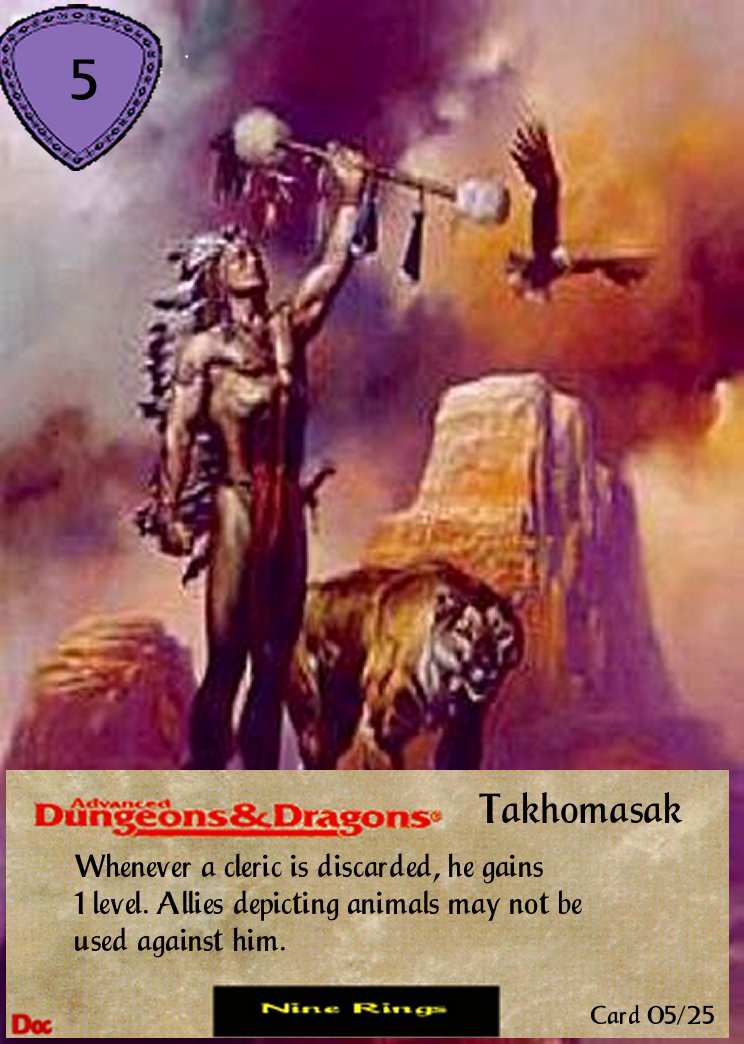
2.
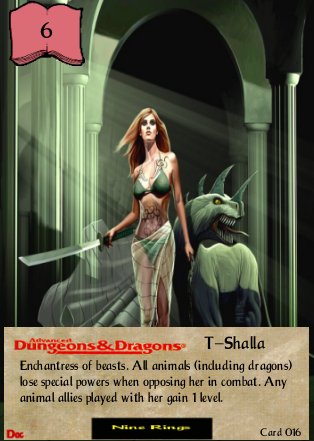
1.
